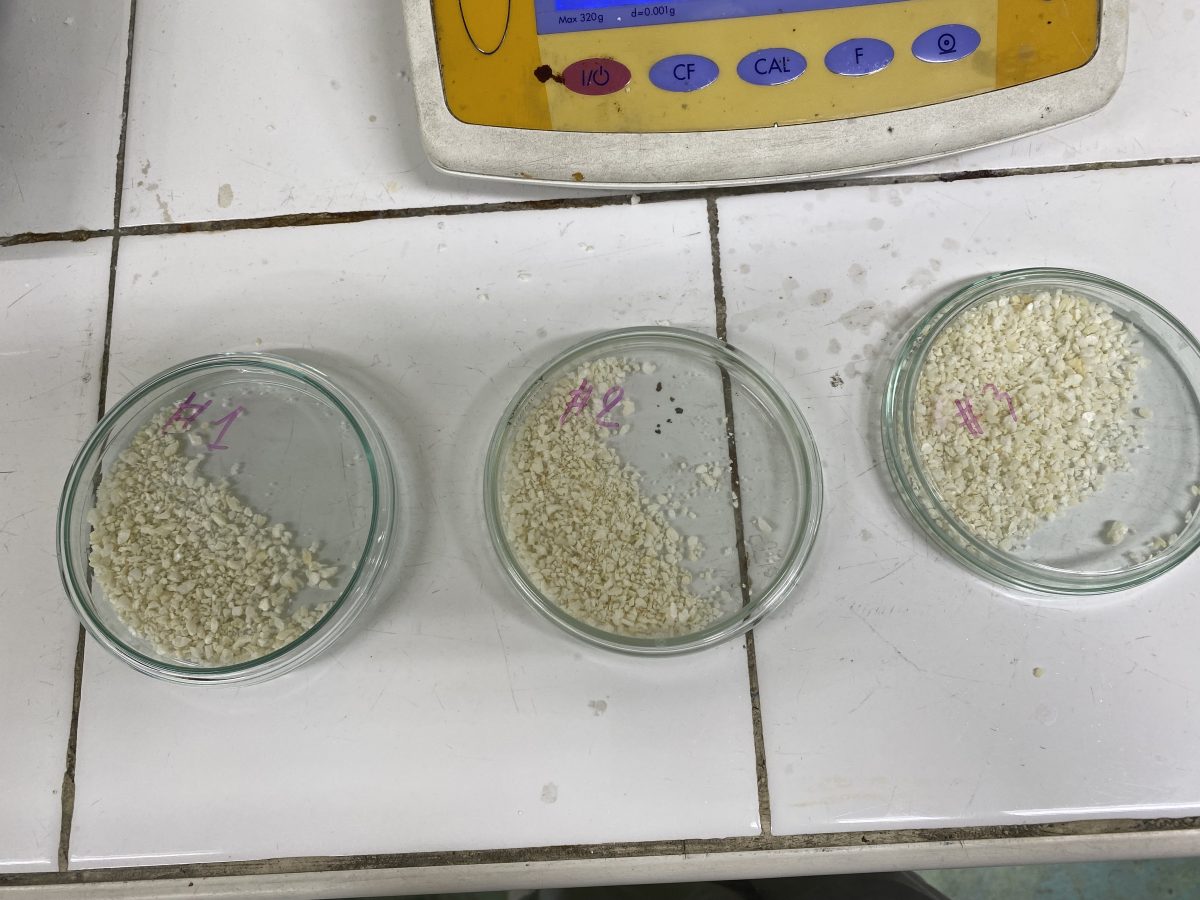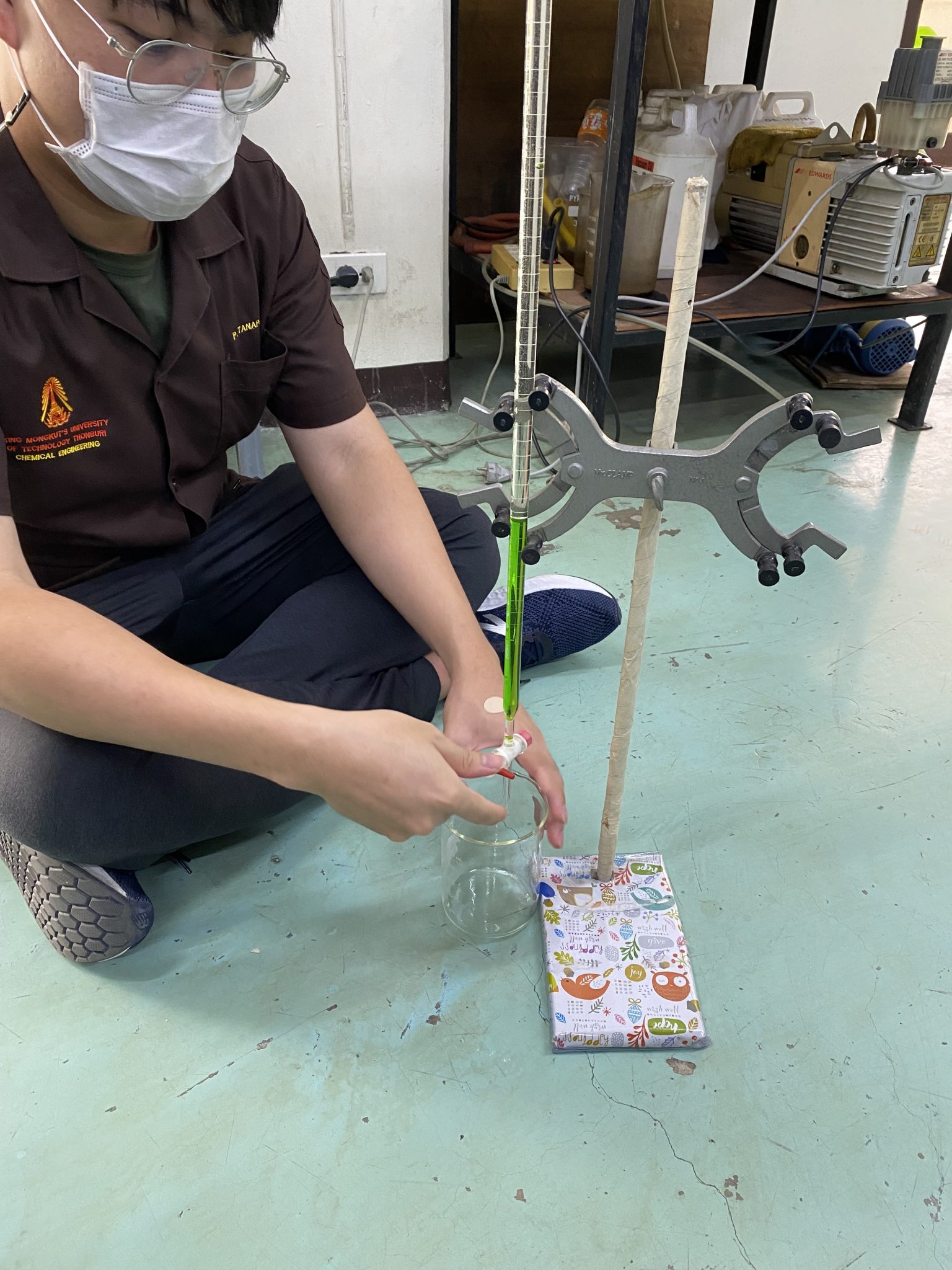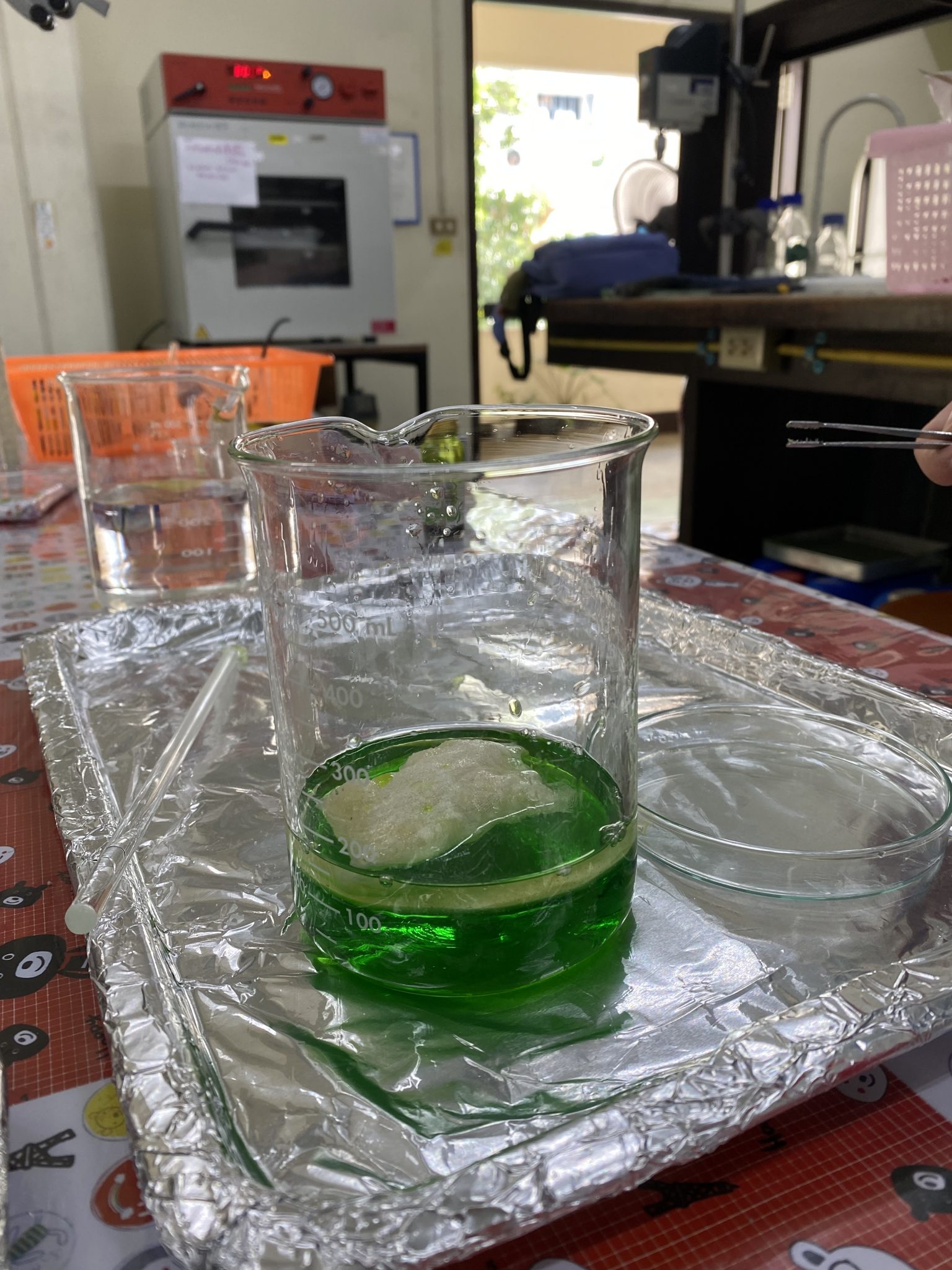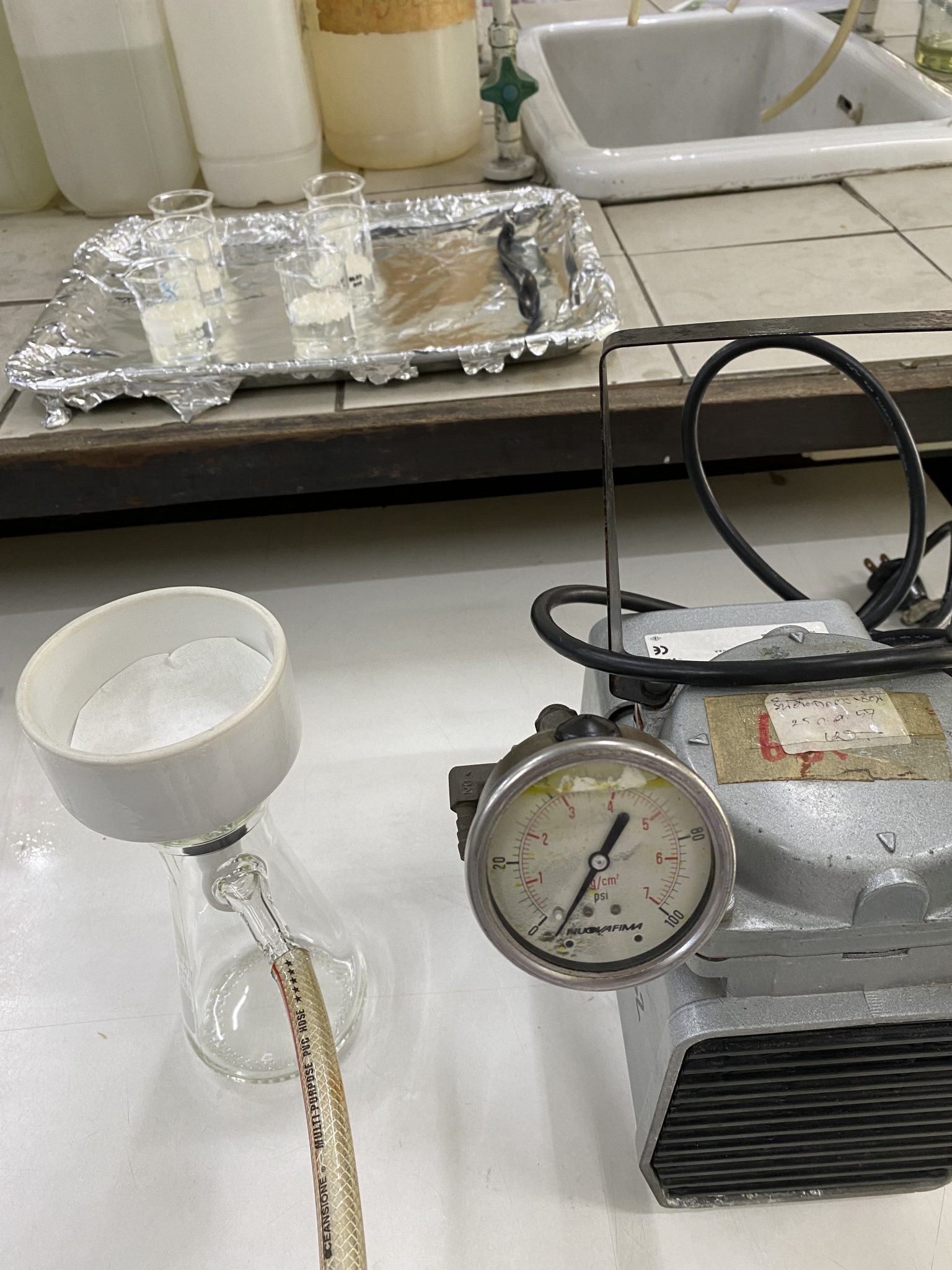Oil spills, whether resulting from minor ship leaks or major accidents in oil pipelines, have a severe impact on the environment and marine ecosystems. In Thailand, cassava stands as a prominent cash crop, with the country’s production surpassing 29 million tons in 2021. Nearly every part of the cassava plant, from its roots to peels, finds utilization except for the stems, which are typically discarded.




This led to the conception of a project to create biomaterial for oil spill treatment, initiated by a team of four students from the Department of Chemical Engineering. Known as the “It’s a cassava!” team, Pronpailin Lippanon, Piyachat Siammai, Gun Khayanying, and Tanapapon Pariyananthawat participated in the PTTEP Teenergy: Young Ocean for Life Innovation Challenge, organized by PTT Exploration and Production Public Company Limited in December 2021. Their project garnered the 1st Runner-Up Award in the PROTECT category.
Piyachat says that the inspiration for this project stemmed from her high school science project, where she replaced silica gel with pulp extracted from cassava stems for moisture absorption in food packets. Building upon this concept, the project aimed to explore the absorbent properties of cassava pulp for potential application in oil absorption.
Tanapapon further explains that while cassava pulpdemonstrates a capacity for water absorption, its oil absorption capacity requires enhancement to ensure its practical utilization in oil spill treatment. Through extensive literature review, the team discovered that treating the biomaterial with chitosan could modify its surface and enhance its oil adsorption capacity. Subsequent experiments conducted by the team have validated that chitosan-modified cassava pulp provides better oil absorption than untreated pulp.
Pronpailin notes the advantages of using cassava pulpover other types of absorbent materials for oil absorption. Being an agricultural waste, cassava pulp is abundantly available and cost-effective, thereby making the innovation more economically viable and accessible. Furthermore, it is a natural material, ensuring that it poses no harm to the marine ecosystem.

Gun says that the innovation process allowed them to apply knowledge learned from their physics and chemistry classroom. Participating in the competition enabled them to develop additional skills, such as time management,problem-solving skill and lab techniques. Although working amidst the pandemic was challenging, the experience proved to be rewarding.
While this is a small university project, it underscores the potential and significant benefits of harnessing agricultural waste in Thailand to create a high-value and environmentally friendly material. Such material serves as a viable substitute for costly and non-biodegradable synthetic absorbents.


